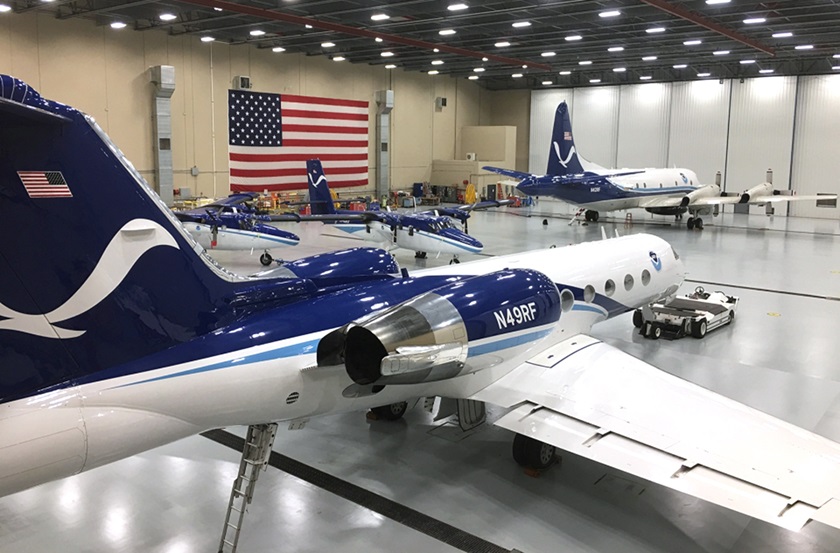Move over, ‘Kermit’ and ‘Miss Piggy’
New King Air 350CER joins Florida-based NOAA research fleet
The National Oceanic and Atmospheric Administration (NOAA) Air Operations Center hangar with Lockheed WP–3D Orion “hurricane hunter” mainstays Kermit and Miss Piggy is getting a tad crowded after the recent addition of a new Textron Beechcraft King Air 350CER research aircraft badged as N67RF.
Anticipated missions for the extended-range, twin-turboprop King Air include photographic surveys after earthquakes, oil spills, blizzards, tornadoes, floods, and named hurricanes. The $11.8 million addition to the Lakeland, Florida, fleet doubled NOAA’s King Air resources that are tasked with coastal mapping, snow and soil moisture surveys, and emergency response missions. The agency has operated one King Air 350CER since 2009, and the aircraft registered as N68RF was instrumental in providing key infrastructure damage reports after Hurricane Maria devastated Puerto Rico and Fernando Luis Ribas Dominicci Airport in 2017.
Standard specifications call for a 35,000-foot ceiling, a 2,400-fpm climb, a cruise speed of 245 knots, and a useful load of 6,033 pounds. The extended range version of the aircraft can “collect critical information while remaining airborne for 7 to 8 hours depending on fuel and payload,” NOAA reported. Normal aircraft configuration includes seating for two pilots, a sensor operator, “and 1-2 additional crew members, depending on the amount of sensor equipment installed.”
The King Air’s two large downward-facing glass ports can support a wide variety of remote sensing systems including digital cameras, multispectral and hyperspectral sensors, topographic and bathymetric light detection and ranging (LIDAR) systems, and gamma radiation detectors, the administration noted. The dual-sensor port modification allows simultaneous data collection from multiple sensors and enhances the aircraft’s research capabilities. The glass plates in the sensor ports allow the cabin to remain pressurized but can be removed “and the aircraft operated unpressurized, if required for science,” NOAA said.
“We are honored the King Air 350CER aircraft continues to be the aircraft of choice to fill a variety of critical mission needs for NOAA,” said Bob Gibbs, Textron Aviation vice president of special mission sales. “The aircraft’s custom sensor port modification, combined with its extended range performance features, makes it a powerful and reliable platform to carry out the agency’s unique missions during critical times.”
NOAA moved into the Lakeland Linder International Airport facility in 2017 and is expanding the existing operations building from 99,000 square feet to 156,043 square feet to accommodate additional aircraft and other improvements.
In 2019, the agency ordered a $40.7 million Gulfstream G550 that would enter service in 2022 after modifications to support hurricane and tropical storm forecasts, atmospheric research, and other missions.
The special-mission fleet is rounded out by a de Havilland DHC–6-300 Twin Otter, a Gulfstream IV-SP high-altitude jet, and a Gulfstream Turbo Commander AC-695A that has seen service since 1984 and could soon be retired.





